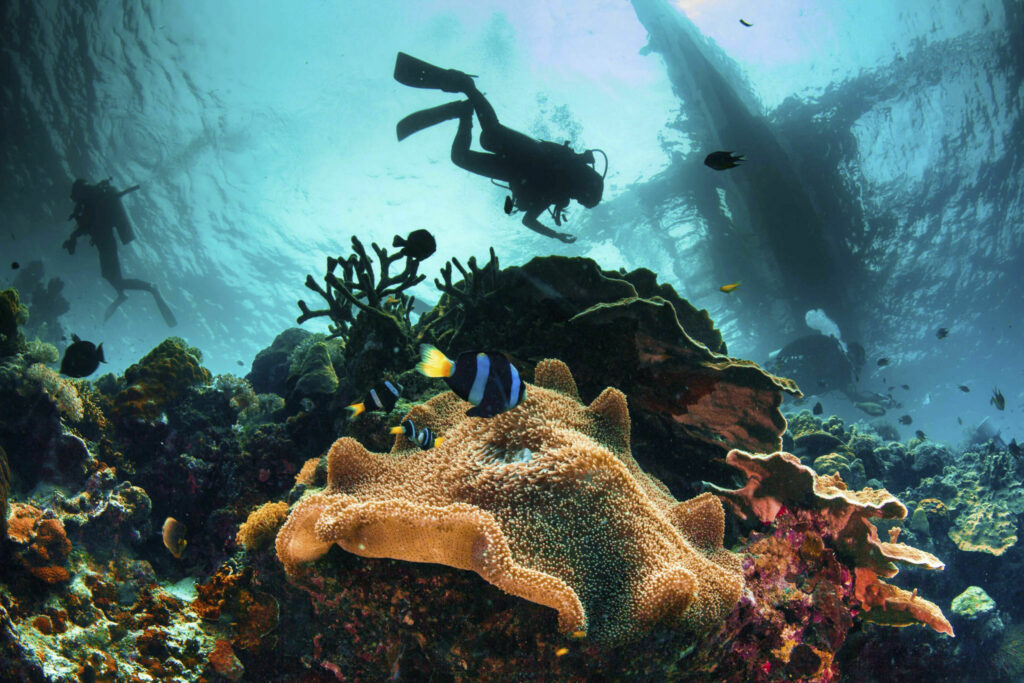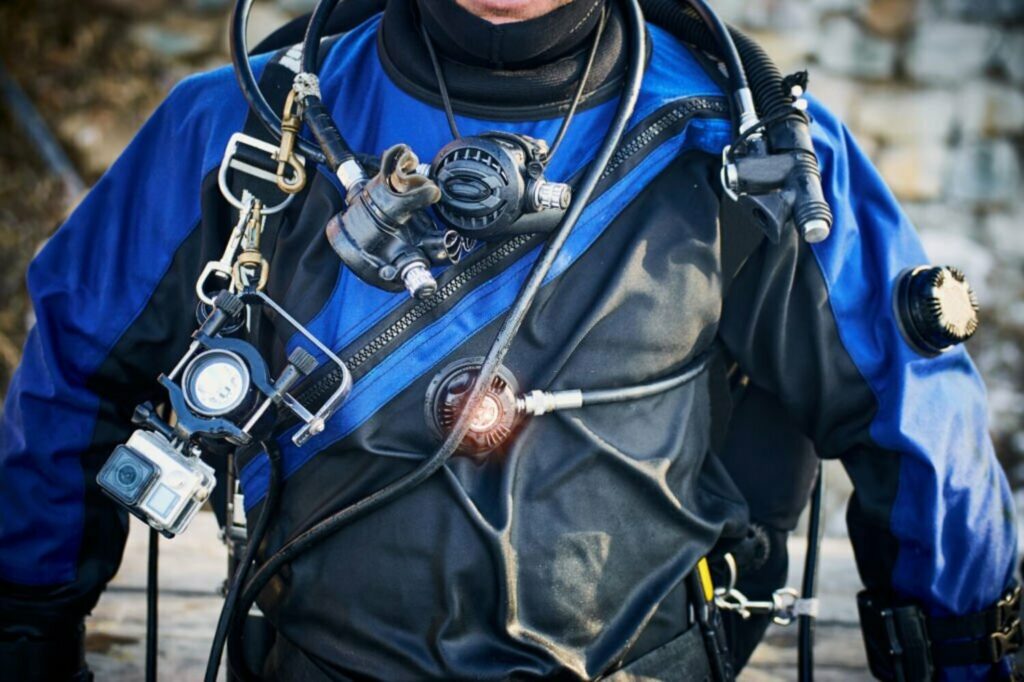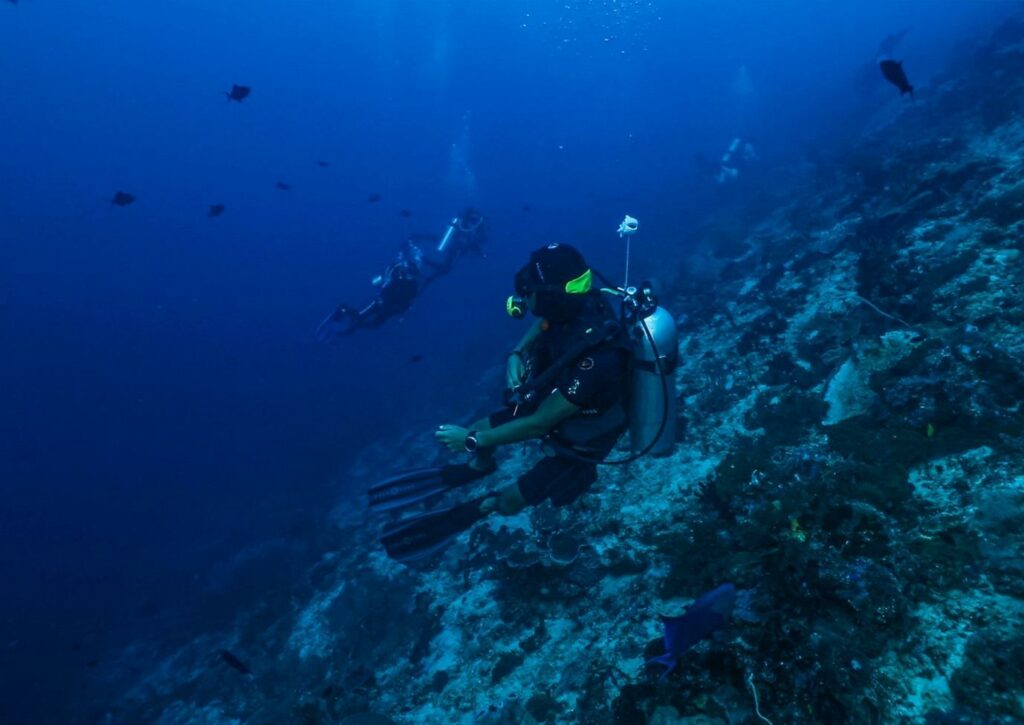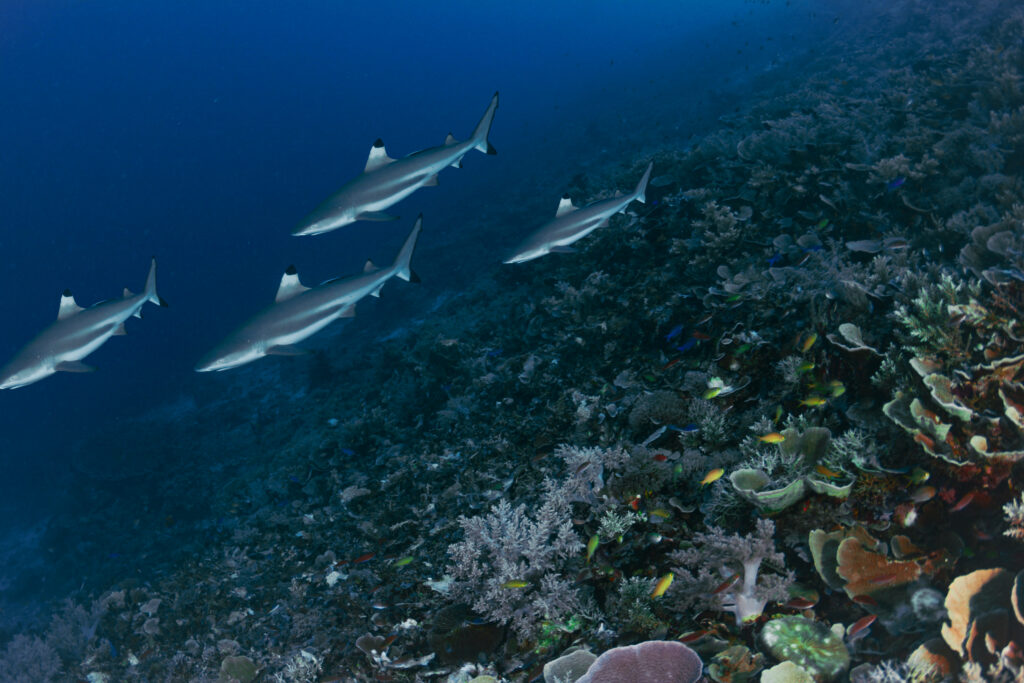How to Use a Compass to Navigate Underwater

One of the main reasons for arguments between couples has to be utilising maps or GPS devices while driving. Just hearing the term “compass” may chill people to the bone. In order to reduce some of the tension, let’s look at some advice on using a compass for underwater navigation.
How to Use a Compass to Navigate Underwater
Truthfully, utilising a compass for underwater navigation is not all that dissimilar from using one for terrestrial navigation. The main modifications are the presence of currents, restricted visibility, increased gauge monitoring, vertical space and movement, and time pressure. You can also increase your success rate in navigating by using natural navigation when scuba diving. Underwater navigation requires both spatial awareness and accurate compass positioning to be successful.
We’ll examine some solutions for these extra difficulties that crop up when navigating underwater. Let’s review the fundamentals first, though.
Using a Compass: A Guide
A compass and a personal computer are comparable in that they don’t interpret your commands and provide you with a response. You must tell a computer what you want it to accomplish.
In a similar vein, a compass cannot determine your destination or interpret your navigational needs. All it does is assist you with self-orientation with respect to magnetic north, which facilitates navigation. Indeed, the magnetic north needle on a typical underwater compass always points in that direction.
Because a compass is meant to help with navigation, it is painted with the four primary cardinal directions. There is a 90-degree angle between these. These are West (W), South (S), East (E), and North (N).
This short activity will help you become familiar with the cardinal directions. Acquiring experience in land navigation is crucial for mastering underwater compass navigation. One piece of equipment that a rescue diver must have is a compass.
How to Interpret a Compass
The simplest form of navigation is a vector, or straight line, connecting points A and B. By rotating to face point B while standing on point A and reading the heading on your compass, you can ascertain the direction of that travel path.
In order to keep things simple, divers steer clear of intricate underwater travel routes and frequently use the compass reciprocal heading. This makes it simple for divers to travel from point A to point B and back to point A, where they began. Simply put, reciprocal refers to travelling in the same direction and covering the same distance. To reach the starting point, one must mathematically make a 180-degree turn at point B and reciprocate the direction of travel.
Thus keep in mind that travelling slowly over short distances reduces your chances of getting lost. Moreover, it’s acceptable to get lost. Don’t worry, we can ascend to the surface if necessary. We shouldn’t be too far from where we started if we applied the earlier rule.
The Lubber Line Compass
Typically, a red line painted on the compass’s face is known as the lubber line. The navigator can better see the directional travel path from their starting point to their intended destination with the aid of this line. The lubber line can help determine direction if we are not precisely travelling in one of the four cardinal directions.
ALSO READ : 6 Underwater Wide Angle Photography Techniques
Challenges of Underwater Navigation
All of this still sounds a little complicated and technical. Now let’s explore the additional difficulties that come with underwater navigation.
Movement in three dimensions
Not only can you move left or right, forwards or backwards like you can on land, in the water, you can also go up and down. This can lead to you becoming easily distracted and unaware of your surroundings when navigating with a compass. Beginner divers frequently make this error. They perceptually focus more on their compass due to the added task of navigation. The diver will thus frequently neglect to check their air, their depth, or even their friend. A crucial component of safe diving is upholding a buddy system. Divers use their right wrist to hold their compass and computer, and their left hand to grasp their left elbow, to prevent rising or falling while keeping their direction of travel underwater.
Keeping an Eye on Depth, Air, and NDL Bottom Times
Underwater divers must constantly check their depth, no-decompression limits, and remaining air supply. They must also keep up their buddy system. We are unable to park the car on the side of the road and turn our large paper map around multiple times until we realise we didn’t need to rotate it in the first place due to the limited time at depth. This frequently leads to inexperienced divers committing to a travel direction and sticking with it without checking to see if they are actually swimming in the desired direction.
Lack of Peripheral References and Low Visibility
On land, you have this peripheral reference to help you navigate, even over long distances, once you have determined your travel direction and you spot a noticeable mountain in the distance. Underwater visibility will average from 10 to 15 metres at most places, and it can get much worse at nearly zero in others. This makes divers more aware of and reliant on their compass direction. We still use natural reference points in scuba diving navigation, just in a different way.
For instance, I can use a distinct coral that I can see in that direction as a natural reference once I’ve determined my travel direction. I can locate a new natural reference in my travel direction once I arrive at it. This will help me on my reciprocal journey heading back as well, since I should be able to identify some of these visual cues.
Currents Underwater
You may get pushed off course even if everything is done correctly if you are swimming against the current. You can make use of visual and natural references to ensure that you don’t stray from your intended route during current dives also. When you are close to the bottom, keep an eye out for small sea urchins, corals, and other marine life, and visualise moving in a line between these. You will know you have to make up for the current if you see them drifting left or right of your imaginary line. The best navigational advice I can give is to always double-check your location rather than getting lost and attempting to find your way back underwater.
Enjoy a Diving Trip in Raja Ampat and Komodo with La Galigo Liveaboard

La Galigo is known as one of the best liveaboard diving boats in Raja Ampat Indonesia, and it offers trips to well-known diving destinations such as Komodo and Raja Ampat. The Coral Triangle is located in Indonesia, which has the highest marine biodiversity on the planet.
La Galigo Liveaboard Diving was founded in 2015 by two avid divers who wanted to explore some of Indonesia’s pristine reefs but found that all existing scuba diving options were frequently out of their budget, and wanted to provide an affordable option for everyone to be able to explore these beautiful places.
La Galigo Liveaboard Diving in Raja Ampat & Komodo is a friends and family affair, and our liveaboard diving trips are always focused on fun, safety, guest comfortability, and are exceptional value for money. Our trip prices range from $2,160 for a six-day Komodo liveaboard diving trip to $3,375 for an eight-day Raja Ampat liveaboard diving trip. The price includes four meals a day, diving three to four times a day or snorkelling, and land tours.




